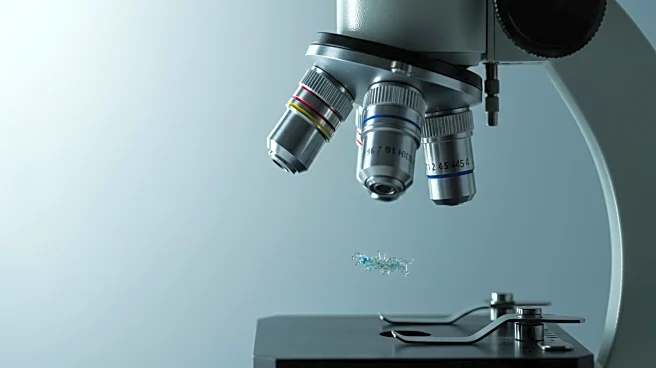What's Happening?
Researchers at Germany's Max Rubner-Institut have developed a new method to detect microplastic contamination in food, particularly seafood, with greater precision. This breakthrough addresses the challenge of accurately measuring microplastics and nanoplastics, which has been difficult due to varying testing methods. The team, led by Julia Süssmann, utilized a combination of enzymes, chemical digestion, and pressure filtration to isolate plastic particles from digested seafood tissue. They further employed fluorescent dye and semiautomated image analysis to differentiate plastic from natural particles, such as shrimp shells. This method not only identifies the presence of plastic but also measures particle size and shape, potentially aiding in understanding how these contaminants interact within the human body. The research also found evidence of microplastic contamination in other foods like milk, meat, eggs, and honey.
Why It's Important?
The development of this method is significant as microplastic contamination poses a growing concern for human health and environmental safety. Understanding exposure levels is crucial for assessing health risks and could lead to tighter food safety regulations and increased consumer transparency. Microplastics are not only a threat to marine life but also contribute to air pollution and climate change through plastic production. This research underscores the need to reduce single-use plastics and highlights the broader implications of plastic pollution on public health and the environment. The findings may drive policy changes and encourage industries to adopt more sustainable practices.
What's Next?
The research may prompt further studies into the health impacts of microplastics and nanoplastics, potentially leading to new regulations and standards for food safety. As awareness of microplastic contamination grows, there could be increased pressure on governments and industries to address plastic pollution and invest in alternative materials. The scientific community may continue to refine detection methods and explore the behavior of microplastics in the human body, contributing to a deeper understanding of their effects.
Beyond the Headlines
This development raises ethical and environmental questions about the widespread use of plastics and their long-term impact on ecosystems and human health. It highlights the need for global cooperation in addressing plastic pollution and the importance of innovation in creating sustainable solutions. The research may also influence cultural shifts towards reducing plastic consumption and promoting environmental stewardship.
















